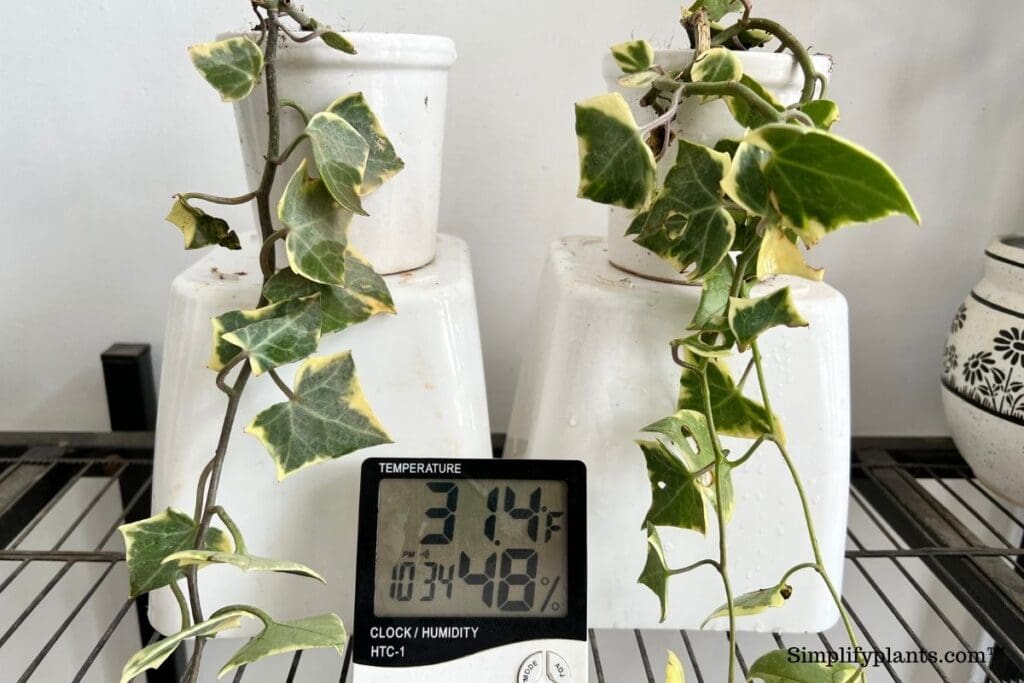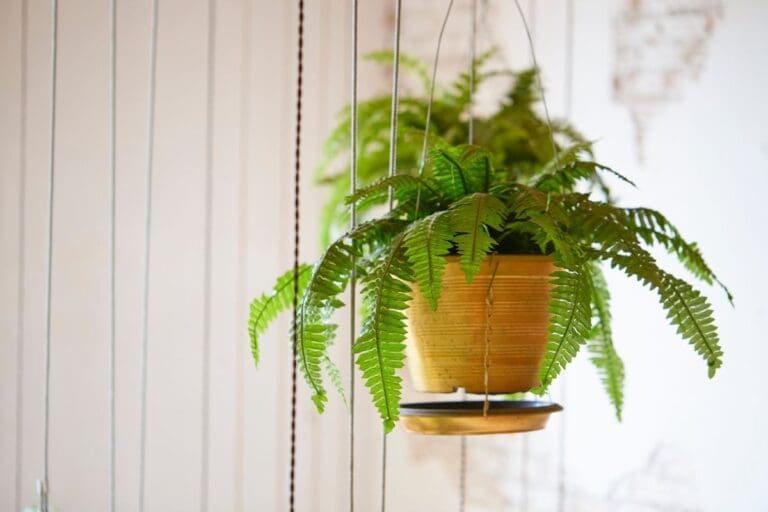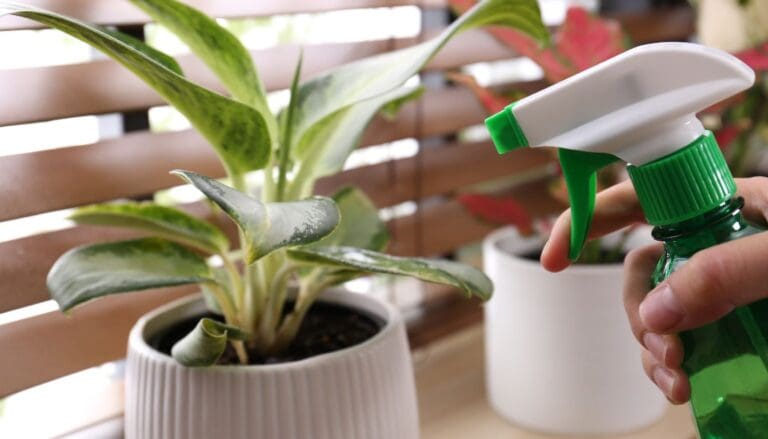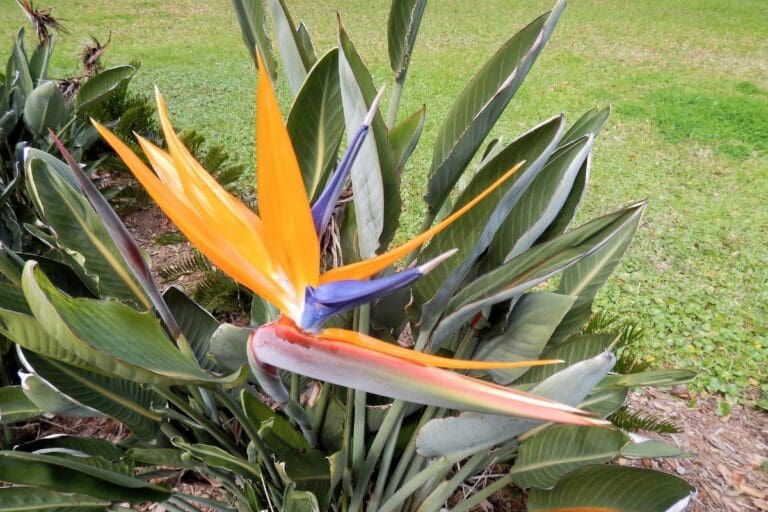Why Is My English Ivy Not Growing? (8 Causes+Fix)
English Ivy, or Hedera helix, is a beautiful houseplant loved for its green and variegated foliage. English Ivy grows at a medium to fast rate, but what if your English Ivy is not growing? Let’s find out.
English ivy will not grow if it doesn’t get enough water or if it gets too much water. Too much water can cause problems like pest infestations and fungal infections. To make your English ivy grow again, remove pests or treat the fungus infections and water only when the soil needs it.
Your English ivy might not be growing due to various other problems. In this article, I will explain all the possible problems so you can deal with whatever is wrong with your ivy.

Please note: Simplify Plants is reader-supported. Some links in the post are affiliate links and I get a commission from purchases made through links in the post.
How fast does English ivy grow?
English ivy can grow at a medium to fast rate as long as it receives the ideal growing conditions.
You might not see substantial growth during the first 2 years as the plant takes this time to reach maturity.
Once the plant reaches maturity, it can grow up to 9 feet yearly.
You will also notice that the plant grows most during its active seasons, spring and summer.
Why is my ivy not growing?
You might see an English ivy plant thriving at your neighbor’s house and not doing well at yours!
Don’t let that dishearten you.
You might not know the best practices for an English ivy your neighbor might have mastered!
Maybe, discuss it with your neighbor, and you might discover some eye-opening facts!
And you have this guide on top of that where I will try to make you aware of the possible problems and the best care practices.
There are possibilities that the plant is getting improper watering, incorrect lighting, low fertilization, or might be infested with pests!
Let’s understand these in detail.
You are overwatering your English ivy.
English ivy plants are susceptible to root rot, a fungal disease caused due to overwatering.
Your English Ivy will not appreciate it if you water it without allowing the soil to dry.
When you give the plant excess water without checking the soil, the soil remains wet for too long.
This affects the roots, which start rotting due to the excess water and lack of oxygen.
A plant that has rotting roots will not be able to grow and might even die if you don’t act on time.
You are not giving enough water to your English ivy.
Although not as dangerous as overwatering, giving your English ivy less water can also stunt its growth.
When you don’t give enough water to your ivy, the soil dries and becomes compact.
The roots fail to absorb moisture and nutrients and thus, leaving the plant without the resources for growth.
Keeping your ivy thirsty for too long is not a good idea.
You are expecting growth at the wrong time.
The English ivy plants prefer growing during the spring and summer and don’t enjoy harsh winters.
Expecting it to grow during the winter is useless because the plant goes dormant and prefers to rest instead of growing.
You must allow the plant to rest and keep it indoors, so it is not exposed to low temperatures or frost.
Your English ivy is not getting enough light.

English ivy plants love indirect sunlight and need at least 6-8 hours of it.
But, if the plant is placed in a shadier spot, it might not get enough light for faster growth.
So, maybe your neighbor has placed their English ivy in a brighter spot which is why it seems to be growing more than yours.
Plants prepare their food and get their energy from sunlight.
Without it, all the processes will slow down, and the plant will lack the energy for fast growth.
You are not fertilizing your English ivy enough.
English ivy plants can grow without fertilization, but that might not be ideal if you expect a lot of growth.
Without enough fertilization, the soil lacks the nutrients the plant needs.
Even if you prepared nutrient-rich soil for your ivy, the nutrients will get used up and washed away over time.
This is when fertilizers come in handy and keep providing the required nutrients to your ivy.
If you haven’t added any fertilizer to your English ivy, this is a sign that you must start fertilizing it.
A lot of times, the soil might not have enough Nitrogen supply.
Nitrogen can boost the plant’s growth effectively, so you can try fertilizing your English ivy with a Nitrogen-rich fertilizer.
Your English ivy has pests.
Some common pests attacking your English Ivy are spider mites, mealybugs, and whiteflies.
Pests will attack your English Ivy if it is living in unfavorable conditions.
For example, too much water will attract mealybugs, whereas too little water will bring spider mites.
Pests feed on the plant’s sap, which contains all the fluid and nutrients.
Without this, your English ivy will grow weaker daily and fail to grow.
Your English ivy is not getting enough humidity.

English ivy plants hail from humid regions and love humidity.
You might not have noticed, but the humidity levels might be very low inside the house.
If your English Ivy doesn’t get enough humidity, it will dry up and grow much slower than it should.
If you want to check the humidity levels inside your house, use a humidity monitor.
Your English ivy is stressed.
If you recently brought your English Ivy home, the plant might be stressed due to the transportation or the new environment.
The plant also might be stressed after repotting or if it faced any damage.
Too much repotting can also make the plant stressed.
All these reasons can impact the growth of your English ivy plant.
How can I make my English Ivy grow faster?
If your English ivy is not growing and you’re worried about it, you should inspect the plant.
The first step to fixing this issue is identifying what is wrong with your ivy.
Once you know the reason, you can work on the respective problem and fix it so your ivy can grow fast again.
Fixing an overwatered ivy
If your English ivy is not growing due to overwatering, you will find that the soil is wet.
To fix an overwatered ivy:
- Stop watering it.
- Place the plant in a spot with ample indirect sunlight and allow the soil to dry.
- You can take the plant out of the pot, spread the soil and roots on paper, and let them dry under indirect light.
The roots might have started decaying if you’ve overwatered for too long.
You will start getting a stale smell from the soil.
To fix an English ivy with root rot:
- Take the plant out of the pot and wash the roots.
- Identify the brown and mushy roots and prune them with a sterilized pruner.
- Spray fungicide on the healthy roots.
- Repot using a fresh potting mix and a new or cleaned pot.
To prevent overwatering, use a moisture meter or conduct a finger test to check if the soil needs water.
If the soil is moist, allow it to get dry before watering.
Fixing an underwatered ivy
If your ivy has dry and brown leaves and the soil is compact, you have not given it enough water.
To fix an underwatered ivy:
- Poke holes in the soil with a chopstick and water the plant thoroughly till it drains out of the drainage holes.
- Fill the bathtub, sink, or a bucket with water and place the plant’s pot in it and let it soak water from the bottom. Leave it for some time, take it out, and let the excess water dry out.
To prevent underwatering your English ivy, you can use a self-watering pot or a self-watering kit if you don’t have the time to water them.
Or, you can maintain a calendar to remind you to check on your ivy and water it if needed.
Fixing an under-fertilized English ivy

Underfertilization can be a major reason behind slow or no growth in your ivy.
Feed your English ivy once a month with a 20:20:20 NPK fertilizer during spring, summer, and fall to support its growth.
If you can get the soil checked, go for it.
Take a sample and send it for testing.
If the soil is low on Nitrogen, consider fertilizing your ivy with a Nitrogen-rich fertilizer.
Don’t avoid fertilizing the plant if you want to see it grow.
Provide enough light to your English ivy
English ivy plants need indirect sunlight to thrive.
Although the plant can tolerate low and medium light, this can impact its growth.
If you think your ivy is not getting enough light, relocate it to a spot that gets more indirect sunlight throughout the day.
Move it closer to the window or take it to a room that gets more light.
If your house lacks natural light, bring artificial lights and keep your ivy under them.
Increase the humidity around your English ivy
English ivy loves humidity.
A minimum of 40% humidity is non-negotiable for these plants.
If you want to increase the humidity around your ivy, install a humidifier and keep it near your ivy.
You can consider misting if you don’t have a humidifier.
You can also relocate the plant to the bathroom, laundry room, kitchen, or basement, as these rooms have higher humidity levels than the rest of the house.
Getting rid of pests from your English ivy

If your English ivy has pests, you must eliminate them as soon as possible.
If you don’t act fast, pests will take over your plant and damage it to a level where reviving it will become difficult.
To remove the pests:
- Isolate the ivy from other houseplants.
- Give the plant a good wash with a strong spray of water.
- Take rubbing alcohol on a cloth and wipe the affected areas.
- Take a Neem oil solution in a spray bottle and spray it all over the plant.
- Prune the areas that are heavily infested.
- If nothing else works, use a pesticide to remove the pests.
To prevent pest infestations, keep your ivy in favorable conditions.
Don’t stress the plant.
Although some stress is unavoidable, such as the stress of transportation or repotting, try not to put more stress on your ivy.
Be careful when repotting it, so the roots don’t get damaged.
Avoid repotting too frequently or during winter as these can increase the repotting stress.
Place the plant in a safe spot where the children or your pets can’t reach and damage the plant.
How can I make my English ivy grow thicker?
Your ivy is doing fine, but if you want to see more growth, here are some steps:
- Prepare a potting mix that has a lot of organic matter in it.
- Fertilize your English ivy with a Nitrogen-rich fertilizer.
- Prune your ivy to reduce the uneven growth and encourage more growth.
- You can fertilize with organic fertilizers such as banana peels, eggshells, Epsom salt, etc.
- Dilute the fertilizer to make it half-strength before fertilizing.
Final thoughts
An English Ivy can grow fast and become bushy in no time, but you must provide it with the ideal growing conditions so it can reward you with fast growth. If your English ivy is not growing, it is undergoing some problem.
Although not growing in winter is natural and normal, some other reasons an English ivy stops growing are lack of light or fertilization, improper watering, low humidity, pests, stress, etc. If you can identify and fix the problem on time, your plant will grow fast.
However, if you want your ivy to grow faster than usual, consider fertilizing it with a Nitrogen-rich fertilizer and prune it from time to time.
Reference: Researchgate, University of Tennessee, Mississippi State University, Central Florida Research and Education Center, U.S. DEPARTMENT OF AGRICULTURE.
Recommended Garden Supplies
| Product Image | Our Recommended Gardening Supplies | Check Offers! |
|---|---|---|
Top Top
Top
Top
Top
Top
Top
Top
Top | rePotme Houseplant and Tropical Classic Potting Soil Mix | Check Offer On Amazon |
 Top
Top
Top
Top
Top
Top
Top
Top | Espoma Organic Indoor Plant Food | Check Offer On Amazon |
 Top
Top
Top
Top
Top
Top
Top
Top | GooingTop LED Grow Light 6000K Full Spectrum Clip Plant Growing Lamp | Check Offer On Amazon |
 Top
Top
Top
Top
Top
Top
Top
Top | Soil Moisture Meter | Check Offer On Amazon |
 Top
Top
Top
Top
Top
Top
Top
Top | Govee Hygrometer Thermometer, Bluetooth Enabled! | Check Offer On Amazon |
 Top
Top | LEVOIT Humidifiers for Large Room(Best For Plants) | Check Offer On Amazon |
 Top
Top
Top
Top
Top
Top
Top
Top | Upgraded DIY Automatic Drip Irrigation Kit, 15 Potted Houseplants Support | Check Offer On Amazon |
 Top
Top
Top
Top
Top
Top
Top
Top | Stainless Steel Heavy Duty Gardening Tool Set | Check Offer On Amazon |
 Top
Top
Top
Top
Top
Top
Top
Top | Bonide Insecticidal Soap | Check Offer On Amazon |
 Top
Top
Top
Top
Top
Top
Top
Top | Bonide 32 oz Spray Neem Oil for Organic Gardening | Check Offer On Amazon |
 Top
Top
Top
Top
Top
Top
Top
Top | Garden Safe Fungicide | Check Offer On Amazon |






